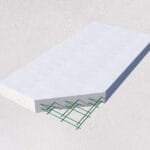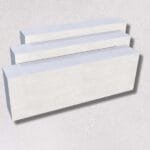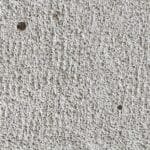West-facing homes are popular choices for their sunlight exposure and favorable feng shui. However, they tend to become uncomfortably hot in the afternoons due to direct heat absorption from the sun. This results in heat buildup, stuffiness, and high electricity consumption — a common issue for many households.
In this article, we’ll explore why west-facing homes get so hot and how AAC materials offer an optimal solution to effectively “cool down” your living space.
1. Why Are West-Facing Homes Hotter Than Others?
Walls and roofs facing west are exposed directly to the intense afternoon sun — the time of day with the highest heat radiation. If not properly treated, these surfaces absorb large amounts of heat, significantly affecting the indoor environment:
Indoor temperatures can rise by 3–7°C compared to other directions
Cooling systems must work harder, increasing energy consumption
Living spaces become stifling, affecting health and sleep quality
Furniture and wall paint deteriorate faster due to prolonged heat exposure
Heat peaks during the hottest seasons
As a result, for west-facing buildings, heat insulation should be considered from the very beginning — particularly during material selection. Instead of relying solely on surface treatments like heat-resistant paint or temporary insulation, using materials with inherent thermal resistance ensures long-term cooling performance and reduced operating costs.
2. Comparing Common Heat Insulation Solutions
There are many approaches to home heat insulation today, each with its pros and cons. Let’s take a look at some popular methods:
| Solution | Advantages | Limitations |
|---|---|---|
| Heat-reflective paint | Easy to apply, low cost | Only treats the surface, peels over time, effectiveness diminishes gradually |
| Insulating foam (EPS, PU) | Temporary insulation | Flammable, requires careful installation, prone to mold and dampness |
| Double-layer walls, red bricks | Stable insulation | Heavy, raises structural costs, complex construction, takes up space |
| Green solutions (trees, vines) | Aesthetic appeal, direct sun shading | Does not block heat transfer through walls, requires ongoing maintenance |
| Autoclaved Aerated Concrete (AAC) | Excellent heat resistance with air bubble structure | Requires proper construction techniques |
3. AAC Materials: An Effective Heat Insulation Solution for West-Facing Homes
3.1 Outstanding Thermal Insulation Properties of AAC
Autoclaved Aerated Concrete (AAC) is a lightweight concrete material containing ultra-fine air bubbles formed during the production process. This porous structure significantly reduces thermal conductivity compared to traditional materials like red bricks or solid concrete.
AAC’s “honeycomb” structure
AAC’s thermal conductivity ranges from 0.11–0.16 W/mK, far lower than red bricks (~0.80 W/mK) or solid concrete (~1.75 W/mK). As a result, AAC provides superior heat resistance, helping to keep indoor temperatures 5–7°C lower than when using conventional materials — especially valuable during scorching summer months in west-facing homes.
3.2 Energy Savings and Reduced Electricity Bills
AAC materials not only provide insulation but also ease the load on air conditioning systems. With excellent thermal resistance, west-facing homes built with AAC bricks or panels maintain a more stable temperature, reducing the need for fans or air conditioners.
Studies show that AAC can help cut monthly electricity bills by 30–40% due to decreased reliance on cooling devices. This results in long-term cost savings and supports green, sustainable, energy-efficient construction.
AAC-built homes stay cooler
Indoor walls made with AAC remain significantly cooler, enhancing comfort.
4. Applications of AAC for Heat Protection in West-Facing Homes
4.1 Building Insulated Exterior Walls
Using AAC bricks to construct exterior walls is one of the most effective ways to insulate a west-facing house. AAC walls not only block heat transfer but also reduce thermal radiation, keeping indoor spaces naturally cooler.
4.2 Heat-Resistant Flooring and Roofing
Roofs are the most exposed areas to sunlight. Without proper insulation, roofs absorb and retain heat, raising indoor temperatures and causing discomfort and energy waste.
For sloped or cast-in-place roofs, EPANEL AAC panels are an ideal solution. These are large-sized, ultra-light concrete panels with excellent thermal resistance. They also reduce roof load and significantly shorten construction time.
For flat roofs or terraces, EBLOCK AAC bricks can be used as an insulating layer above the roof slab. This minimizes direct heat absorption and transfer to lower floors.
Insulating rooftops with lightweight AAC bricks
Installing AAC bricks on rooftops helps prevent heat buildup.
4.3 Combining with Other Heat Insulation Methods
To maximize thermal efficiency — especially for west-facing homes — homeowners can combine AAC with other cooling solutions such as:
Planting greenery: Add plants on balconies, terraces, or building sides to create natural shade
Installing pergolas, sunshades, or awnings: These limit direct sunlight on walls and windows
Using reflective paint or UV window films: Especially effective for west-facing glass or walls
These additional methods reduce external heat absorption. When used together with AAC walls and roofs, they provide a comprehensive and long-lasting heat insulation solution.
A Fully Heat-Insulated Townhouse Built with AAC
We hope this article has helped you better understand effective heat insulation solutions — especially for west-facing homes. If you’re looking for a durable, energy-efficient, and eco-friendly construction material, AAC is a solution worth considering.
📞 Contact us or your nearest DISTRIBUTOR for more detailed consultation on AAC products and tailored solutions for your project!
EBLOCK – A brand by NEW ERA HOME
Contact us for consultation:
– ☎ (+84) 28 3526 7177
– ✉️ eblock@newerahome.vn
– 📍 60 Dang Dung St., Tan Dinh Ward, Ho Chi Minh City, Vietnam.


